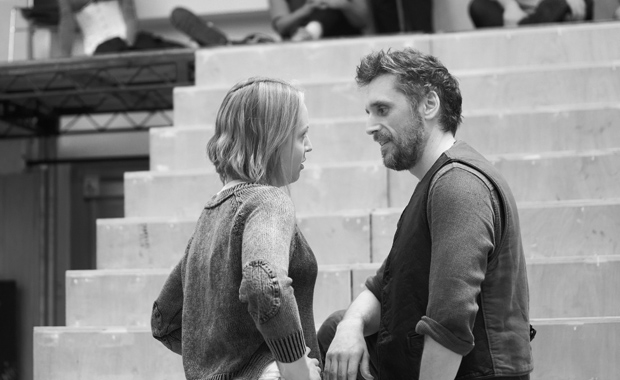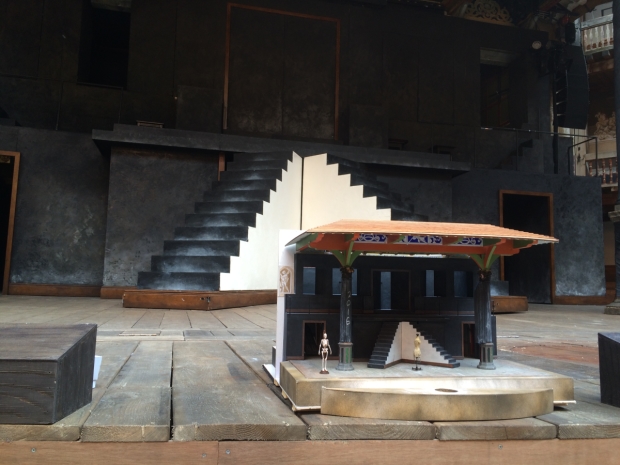Let's Talk About Sets: Chiara Stephenson on The Taming of the Shrew
The designer discusses the process of working in a unique space like the Globe

Our production of The Taming of the Shrew, directed by Caroline Byrne, is set in Dublin in 1916, during the Easter Rising. The set design itself was born out of many ideas, but it was the opening of Yeats's poem Easter, 1916 – "I have met them at close of day/ Coming with vivid faces/ From counter or desk among grey" which sparked our desire to create a bleak, cold setting from which faces and characters could pop. The poem continues – "All changed, changed utterly: A terrible beauty is born". This contrast of bleakness and beauty across Yeats' poem was a really important starting point for us.

Early on, Caroline spoke about conveying the essence of 1916 Dublin, and referencing a brief moment in history where something extraordinary happened. Although the production isn't directly referencing the events of the Easter Rising it works as a nostalgic grounding and undercurrent to the arch and build-up of the play and our Shrew. We didn't want to do a straight up naturalistic period representation of 1916, but instead drew inspiration from the often eccentric vibe of the times, as well as stage designers of the time including Edward Gordon Craig, Adolphe Appia and Josef Svoboda.
Designing for the Globe is unique. From the start, Caroline and I decided to integrate the Musician's Gallery, since live music is so integral to the show, so we made the decision to pull the balcony level out in front of the Globe's original balcony. This allowed actors up there to be present and connected to the action on stage. It's a uniquely sociable space, and we wanted to extend that quality.
Caroline and I then settled upon a design which involved a large set of stairs that protrude and move about the stage, connecting the Musician's Gallery to the main stage and giving actors multiple levels on which to perform. There were also interesting dynamics to be played out with the stairs – we think of the balcony level as traditionally a space for wooing, but in our production, as Petruchio goes up the stairs to woo his Kate, he's met in the middle and flung back down by our Shrew.
With the education and independence of women being a central theme in the play, the quality of the set took on the feeling of an old 1916 school chalkboard, a hard slate, set off with some grand scale classroom objects such as an anatomical skeleton and a large abacus, that whisk onto the stage in the first half.
I often enjoy crude harsh architecture in sets, with cold hostile surfaces. This to me helps highlight the vulnerability and humanity of the actors compared with the grand scale of stage, especially the women, which considering the themes of the play felt very right. We made a very conscious decision to create a stark, simple set which in turn would aid a clean, crisp visual storytelling.
By Chiara Stephenson
The Taming of the Shrew runs at Shakespeare's Globe until 6 August.













